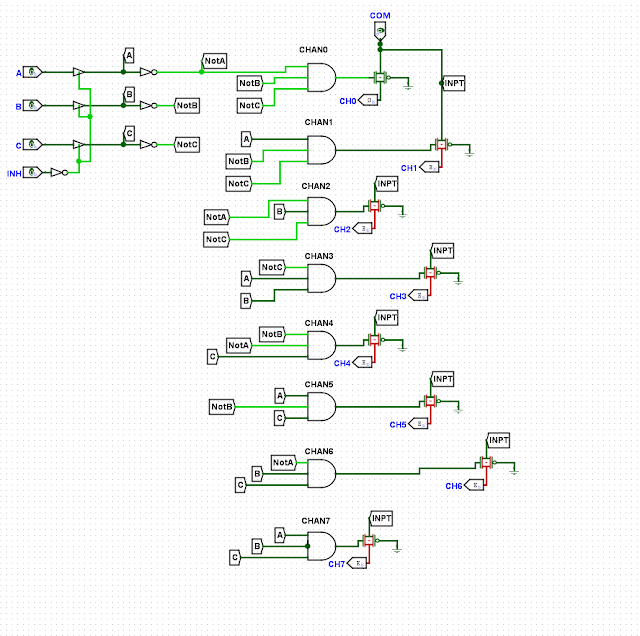The video here got me started on this project--cool sounding filter. Can I build one too?
 |
| Moog HPF--looks OK, works not so OK.... |
Sure I can.
EFM Schematic is here--video and online posts say to add a few 22pF caps; I also added variable gain at audio input and output.
It was a fair amount of work in Kicad to make sure everything lined up, but I thought I got it right, and off the gerbers went to this blog's patient sponsor, PCBWAY.
Whiz and bang, back came the boards:
 |
| To make the layout sane, I used 3 boards--main board, pots and jacks board, and a front panel. |
Before soldering--did everything line up? Yes. Good start.
I got building....
 |
| Taped down the boards to the bench; used my microscope (post here) to solder SOIC IC's. |
 |
| Oh yeah, SOIC's on both boards.... |
 |
| main board done. |
 |
ready to start soldering the pots; Board in the center is the "jacks n pots"; it also has an OP07 to buffer the module's audio output.
|
 |
| Almost ready to test... |
Two evenings--Built!
I put the project down, I needed a break.
I remember walking up the stairs to my bench the next evening thinking--I had not had a "work the first time" (W.F.T) moment in a long time, would I get lucky?
Probably not.
Fired it up, yes, the thing passed audio. Good!
yes, mod1 and mod2 swept the filter. Good!
Yes, the Q adds a (slightly) buzzy "rez" sound to the filter. Good!
But....but...BUT!
after time at the bench and in my rack--sadly, the filter S.L.C. --
"sounded like crap".
Better out then in? Nope.
To whit: SLC (int w; int* s; s = &w;)
The filter blocked all audio too frequently--I didn't think this was because only dogs could hear whatever frequencies the filter was passing....Instead--there was something more fundamentally wrong, like at many sweep settings the output was getting slammed to an op amp rail..
When sweeping the cutoff frequency, often only a fraction of cutoff settings--sometimes 9 to 10 o'clock on the frequency pot--would pass audio at all. Not good.
In spite of adding an attenuator at input and adjustable gain at output, I often had terrible distortion and level mismatches.
Mod1 and Mod2 interacted with one another--this might be a design "feature"?
"Q" worked but
lacked the pleasing whistle-like resonance of the filter in
the video.
In general, I was extremely disappointed in my build of this filter so far--
Hence the entire acronym:
WFTBSLC: the confusing acronym in the subject of this post.
"Worked First Time but Sounded like Crap".
Marvey.
A mistake somewhere--maybe a resistor value was incorrect? Perhaps? probably?
It could be a mistake in the traces as well, I have definitely made both mistakes before.
I didn't match transistors, and maybe I should have? This was due to laziness, and I read you must match transistors for Moog ladder designs to sound, well, Moog-like.
But to me, this sounded a lot worse than transistor mismatching.
Something wrong with the resonance loop? Maybe. Probably.
I will wait a few days, maybe more, then go back to work on it.
Hopefully it's a dumb mistake and will be easily fixed.
Probably not.
I have signed up for some additional DIY audio forums, maybe some folks there will help me get this working?
One of the experienced builders at my
geeky Meetup said to reflow the cap solder joints. Tried that.
Nope. Still SLC.
I will not be defeated! Until next time: DBTF.
update 3-11-24: after going over the build with a scope and DVM, I found no build issues but did find a few mistakes in the layout. I will get new boards made and try again.



















